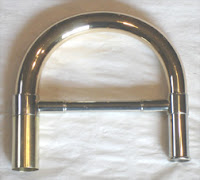
There is an insidious evil that lurks within the hearts of all trombonists.
When we were young and innocent (and beginners), we were lured into that friendliest of scales: B-flat major.
It seemed so simple that we never paused to see the trap lurking within...the A natural in 2nd position and the E-flat in 3rd.
We merrily practiced away allowing the two positions to MORPH into the ....
EVIL FUUUUUUSE!!!

The little voice in our heads may have tried to warn us. The over-worked band director never took the time to catch the problem. Mom and dad just said they were proud (and please use newspaper for the spit).
Nobody warned us of the impending doom.
Instead of a pristine separation of 2nd and 3rd, the evil fuse has practiced its sinister mind control dragging our second positions down and forcing our 3rd positions up.
The result:
a mutant position that was never meant to exist in nature.
Stay safe out there.






















